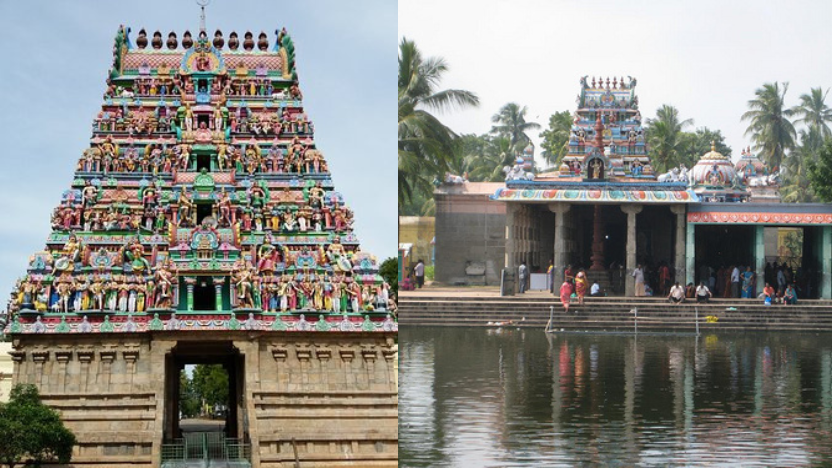Have you come across about this temple before?
At the sacred temple town of Thiruvengadu, lies a divine marvel known as the Rudhra Paadam, the sacred footprint of Lord Rudra. It is believed that worshipping this holy symbol absolves the sins of 21 generations. In comparison, worshipping Lord Vishnu’s footprint in Kashi is said to cleanse sins of only seven generations. Thus, performing rituals at Thiruvengadu is said to yield three times more powerful than Kashi itself.
According to temple traditions, the planet Budhan (Mercury) rules 17 years in one’s lifetime. Hence, devotees light 17 lamps and circumambulate the Budhan shrine 17 times to seek his blessings for wisdom, prosperity, and peace.
While Budhan is often described as Ali Graha neither male nor female in Thiruvengadu, he uniquely manifests as a male deity, radiating strength, intellect, and clarity. Worshipping Budhan here is said to bring eight forms of blessings, excellence in education, royal fortune (Raja Yoga), Kubera-like wealth, happy marriage, childbirth, prosperity, and success in the arts.
However, a special ritual order must be observed. Devotees should first offer prayers to the main deity (Swami), then to Goddess Ambal, and only afterwards proceed to the Budhan shrine to perform remedial poojas.
Thiruvengadu follows not one, but three Agamic traditions, a rare and sacred distinction among Hindu temples. It is said that bathing in the three temple ponds and worshipping Pillai Idukki Amman blesses childless couples with progeny. Those who perform proper pooja to Swami, Ambal, and Budhan are also said to be granted the same blessing.
For many families in the Nagapattinam district, Aghoramurthy, the fierce yet compassionate form of Lord Shiva is revered as their Kula Deivam (family deity). Worshipping Aghoramurthy removes ancestral curses (Pithru Dosham) and resolves misunderstandings among siblings. The sanctum of Aghoramurthy is adorned with paintings that narrate the temple’s legendary history.
Another fascinating aspect is the presence of Nandi with nine visible spear wounds. According to legend, during a battle with the demon Maruthuvan, Nandi was struck nine times. These sacred marks can still be seen during the abhishekam (ritual bathing). It is this very Nandi who receives special Pradosha worship at Thiruvengadu.
However, a special ritual order must be observed. Devotees should first offer prayers to the main deity (Swami), then to Goddess Ambal, and only afterwards proceed to the Budhan shrine to perform remedial poojas.
Thiruvengadu follows not one, but three Agamic traditions, a rare and sacred distinction among Hindu temples. It is said that bathing in the three temple ponds and worshipping Pillai Idukki Amman blesses childless couples with progeny. Those who perform proper pooja to Swami, Ambal, and Budhan are also said to be granted the same blessing.
For many families in the Nagapattinam district, Aghoramurthy, the fierce yet compassionate form of Lord Shiva is revered as their Kula Deivam (family deity). Worshipping Aghoramurthy removes ancestral curses (Pithru Dosham) and resolves misunderstandings among siblings. The sanctum of Aghoramurthy is adorned with paintings that narrate the temple’s legendary history.
Another fascinating aspect is the presence of Nandi with nine visible spear wounds. According to legend, during a battle with the demon Maruthuvan, Nandi was struck nine times. These sacred marks can still be seen during the abhishekam (ritual bathing). It is this very Nandi who receives special Pradosham worship at Thiruvengadu.
Source / Image Credit : Maalaimalar, X, Tripadvisor, Our Travel Adventures, HinduTamil








